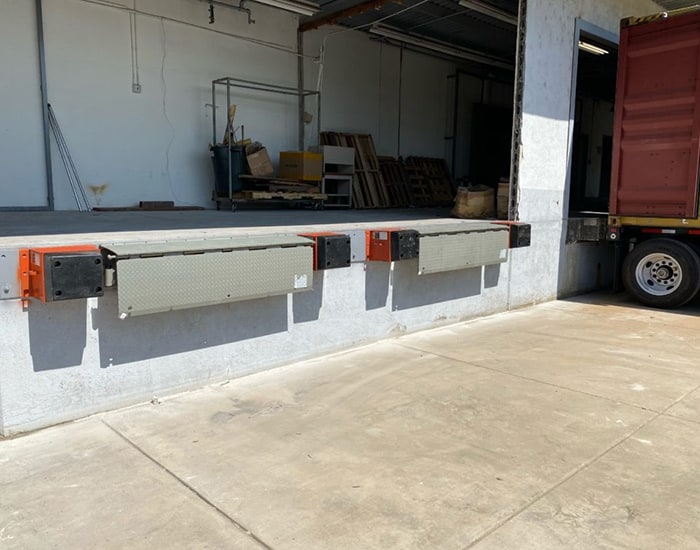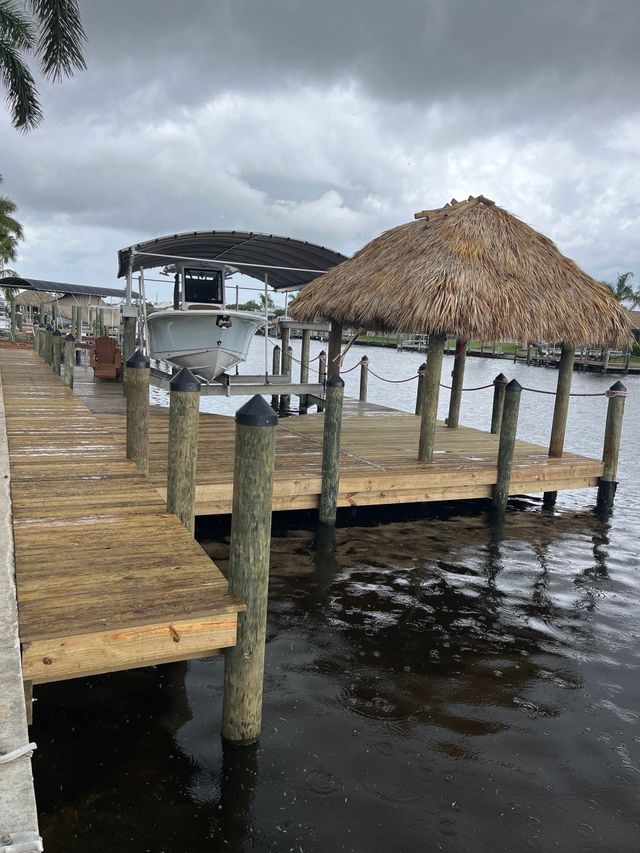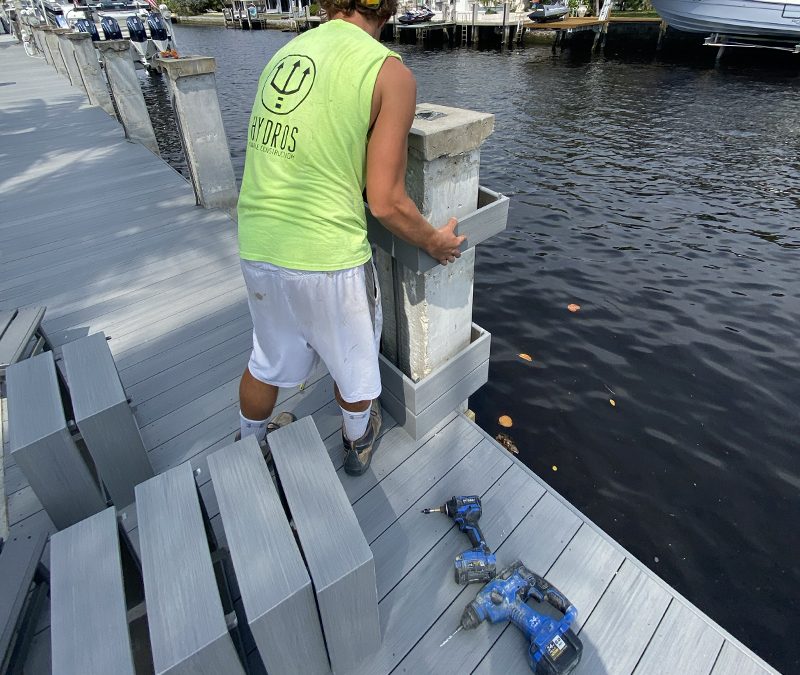How to Select the Right Solution for Your Dock Repairs
How to Select the Right Solution for Your Dock Repairs
Blog Article
Reliable Dock Fixing Techniques: Ensuring Structural Honesty
Guaranteeing the architectural integrity of docks with effective fixing strategies is vital for the durability and safety of marine facilities. Ultimately, choosing the right repair products, such as corrosion-resistant alloys and composite products, is critical for sturdiness.
Analyzing Dock Damage
Examining dock damage is a critical very first action in guaranteeing the architectural integrity and safety of any docking center. This preliminary assessment involves an extensive evaluation to recognize both visible and concealed damages. Secret elements to examine include the dock's structure, pilings, outdoor decking, and equipment. Each component must be looked at for indicators of wear, rot, corrosion, or other forms of destruction that could compromise the architectural integrity.
Architectural designers or certified assessors usually do these analyses utilizing specialized strategies and tools. As an example, undersea evaluations could employ sonar tools or remotely operated vehicles (ROVs) to spot submerged damages. Over water, visual examinations are complemented by utilizing wetness meters and other diagnostic devices to discover underlying concerns not promptly noticeable to the naked eye.

Finding Fixing Materials
Selecting the suitable repair work materials is a crucial step in the dock repair process, one that straight affects the long life and efficiency of the fixed structure. Material selection need to be driven by factors such as ecological problems, load-bearing needs, and compatibility with existing dock components. As an example, timber is a typical choice for docks because of its all-natural resilience and visual allure. Choosing the right kind of wood, such as pressure-treated lumber or naturally rot-resistant varieties like cedar or teak wood, is critical to withstand aquatic atmospheres.
Along with timber, composite materials are increasingly preferred because of their resilience and low maintenance requirements. Composites, generally made from a blend of plastic and wood fibers, provide excellent resistance to rot, bugs, and UV damages. For steel anchors, choosing corrosion-resistant alloys such as galvanized steel or marine-grade light weight aluminum is important to prevent rust and guarantee structural stability in saline water problems.
Epoxy resins and marine-grade sealants are essential for fixing splits and securing joints, providing a waterproof barrier and improving the dock's total strength. By thoroughly picking high-quality materials, dock repairs can achieve long-lasting outcomes, thereby guarding versus future degradation and making sure safe, reliable usage.
Architectural Reinforcement Methods
Effective architectural support techniques are important in making sure the security and durability of dock repair services. This technique is particularly efficient for docks exposed to heavy tons or severe environmental conditions.
One more necessary strategy is the application of fiber-reinforced polymers (FRP) These products use high strength-to-weight ratios and superb resistance to corrosion, making them suitable for reinforcing wood or concrete docks. FRP can my latest blog post be applied in strips or sheets and adhered with epoxy materials to enhance structural honesty.
Supporting and securing systems additionally play a critical function in architectural reinforcement. Cross-bracing, making use of steel or wooden beam of lights, can combat lateral forces, reducing swaying and activity. Securing systems, such as helical piers or driven piles, give a steady foundation by moving tons to deeper, much more stable dirt layers.
Last but not least, the assimilation of load-distribution plates can assist distribute weight extra evenly throughout the dock's surface area, alleviating local tension factors. These techniques jointly make sure that anchors remain robust and risk-free, with the ability of withstanding the rigors of their functional atmosphere.
Advanced Repair Work Approaches

Another advanced strategy entails undersea welding, which permits repairs to be conducted without the requirement to dewater the location. This technique is specifically advantageous for addressing structural problems in immersed dock components, ensuring very little interruption to procedures. Enhanced welding techniques, combined with robotic systems, supply accuracy and integrity, therefore extending the lifespan of the dock.
In addition, cathodic security systems are implemented to avoid corrosion in metal dock structures. By utilizing sacrificial anodes or pleased present systems, these techniques effectively mitigate the electrochemical processes that lead to product wear and tear.
Lastly, progressed tracking technologies, such as architectural health tracking (SHM) systems, provide real-time data on the condition of dock frameworks. These systems make it possible for aggressive maintenance and timely treatments, ultimately making sure the lasting structural stability of the dock.
Maintenance and Prevention
Upkeep and prevention are essential concepts that underpin the durability and security of dock structures. Normal evaluations are paramount, allowing for very early detection of deterioration, prospective weaknesses, and environmental influences. A proactive approach, entailing regular look for corrosion, rot, and structural changes, minimizes pricey repairs and extends the dock's operational life.
Preventative procedures must navigate here consist of applying protective coverings to steel elements to defend against corrosion and utilizing treated timber to stand up to decay. Furthermore, making sure correct water drainage and ventilation can protect against water buildup, which is an usual root cause of structural degradation. Incorporating quality materials and sticking to manufacturer guidelines throughout building and repair phases likewise play critical roles in enhancing sturdiness.

Educating personnel in dock upkeep ideal practices makes certain constant application of precautionary actions. Leveraging technological advancements, such as drones for inspections and sensing units for real-time surveillance, can better improve upkeep initiatives. By prioritizing upkeep and prevention, dock owners can make certain architectural honesty, functional security, and affordable administration over the dock's life-span.
Conclusion
In final thought, preserving the structural integrity of marine centers demands comprehensive dock repair strategies. Advanced repair strategies, combined with normal maintenance techniques, ensure the dock stays secure and functional under varied ecological problems.
Making sure the structural honesty of anchors via reliable repair service strategies is critical for the durability and safety of aquatic centers.Choosing the appropriate repair service products is a pivotal step in the dock reconstruction procedure, one that straight affects the longevity and efficiency of the repaired structure.Reliable linked here architectural support methods are critical in guaranteeing the stability and durability of dock repair services. By prioritizing upkeep and avoidance, dock proprietors can make sure architectural integrity, operational safety, and cost-effective monitoring over the dock's lifespan.
In conclusion, preserving the architectural honesty of marine centers requires detailed dock repair work methods.
Report this page